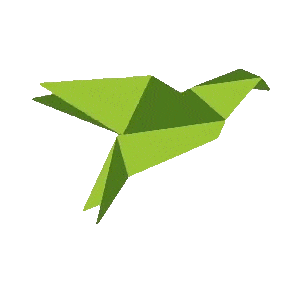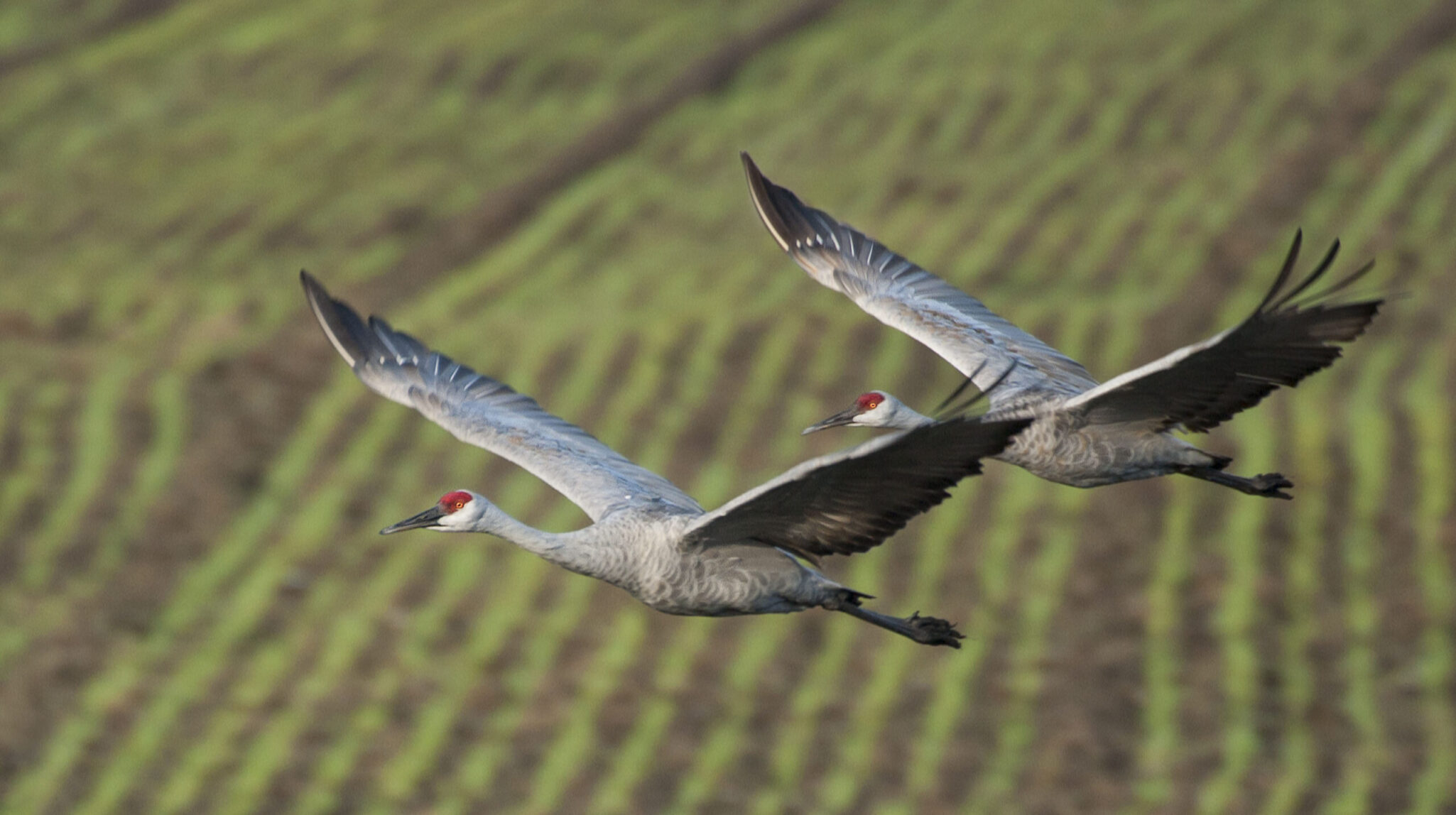
If you look up into the sky on a clear and bright spring or fall afternoon, you may be lucky enough to see one of the world’s most spectacular phenomena—bird migration. Sometimes you can see clouds of thousands of small birds, possibly warblers, flapping overhead, or perhaps a larger lone traveler like a hawk gliding on thermals. One of our favorite sights, however, is witnessing the seemingly haphazard wavy line of a huge V comprised of long-winged birds as it pans across the blue, shifting in form and sometimes direction. Why do some birds fly in this shape?
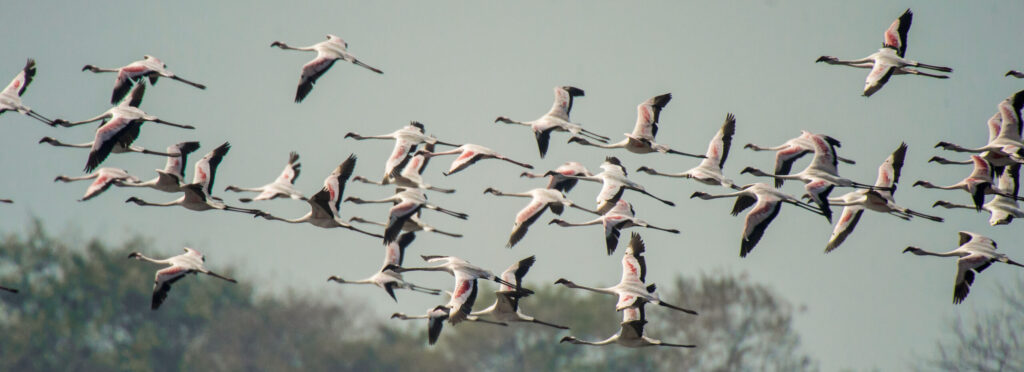
When some species of birds embark on long migratory journeys across seas and continents, they often assume a distinctive V formation in flight. Types of birds who create this formation are typically long-winged birds like geese and flamingos, and they will do so in small groups with low numbers, even single digits, to hundreds if not thousands of birds. Either way, this journey makes a beautiful sight in the sky. But behind the beauty of this behavior is pure functionality.
Scientists have discovered that flying in a V formation offers a range of practical benefits that help these birds conserve energy, navigate effectively, and support each other in their travels. One of the primary reasons for flying in a V formation is the energy-saving aerodynamic benefit it provides. As a bird flaps its wings, it creates a small amount of lift and turbulence in the air behind it. This lift generates an updraft, or upwash as it is known in aerodynamics, which forms a vortex that the birds behind can ride. By positioning themselves in line of the upwash, birds reduce the energy required to stay aloft.
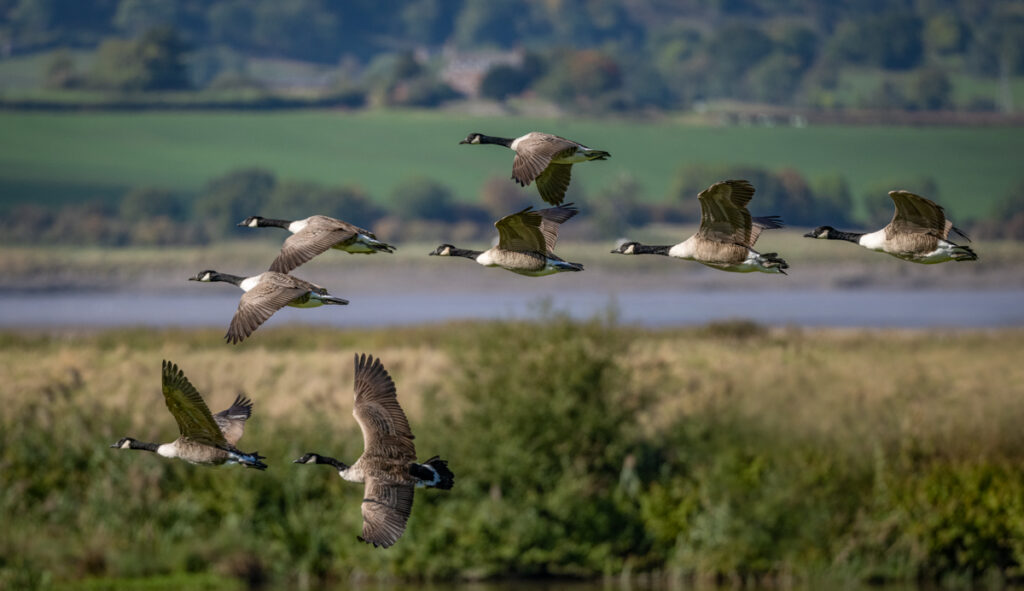
Take, for example, the Canada goose, one of the most well-known migratory birds in North America. Studies show that each goose in a V formation can save up to 20–30% of its energy by taking advantage of the upwash. The lead bird works the hardest, breaking through the wind resistance, but the bird behind benefits from less effort yet still maintaining the same altitude. This benefit is shared among the flock, as each bird will eventually take a turn at the front, allowing the formation to sustain long flights with minimal fatigue across the group.
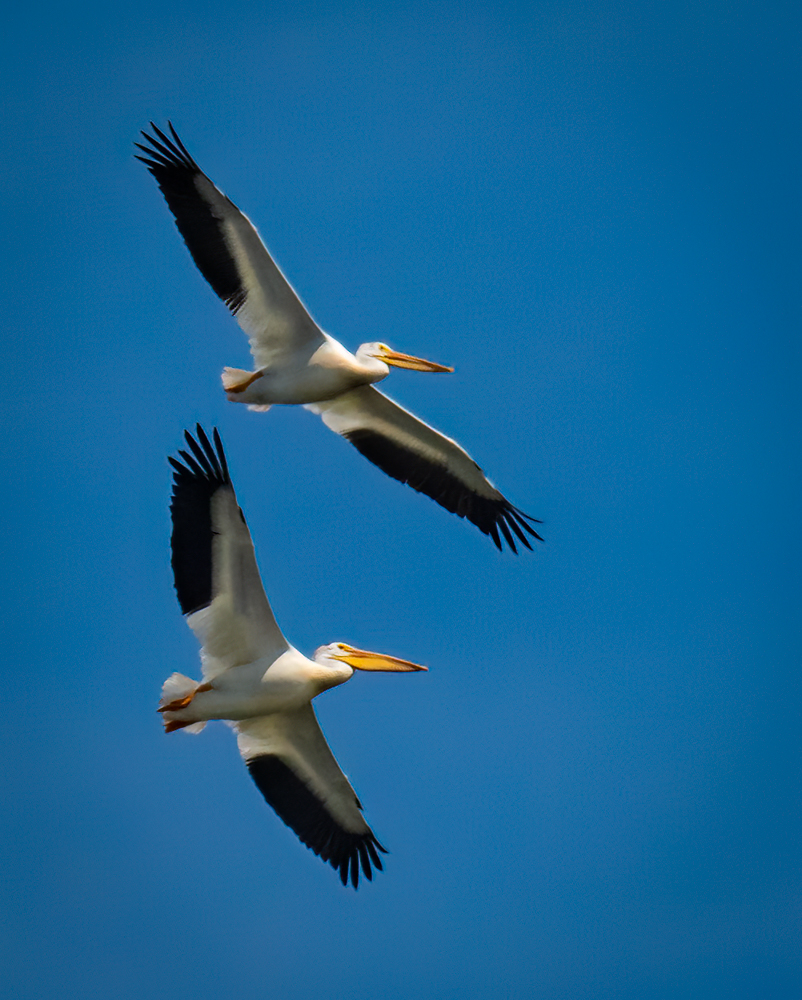
In 2001 a team fronted by Henri Weimerskirch, a researcher specializing in seabirds, fitted heart rate monitors to eight pelicans and monitored them as they followed a historical migration route over the Senegal River. The resultant data showed that when the birds aligned in a V formation, their heart rate decreased by 10%. The data also showed that the birds beat their wings less frequently and could glide for longer periods when they flew as a group.
A few years later, in 2014 a team in Austria aiming to reintroduce the endangered Northern bald ibis to Europe hand-reared 14 chicks. When it was their time to migrate, as they had never been around adult birds who could show them the way, the team flew in microlights across Europe on the ibis’ ancestral migratory routes, and the birds followed them. This time, instead of heart rates, the loggers recorded each bird’s specific position, heading and speed, but most importantly, every wing flap. This data showed that not only did the birds often change position in the V, but they also adjusted their wing flap timing depending on where they were in the group.
But the reason as to why the distinctive V shape is so effective hinges on when each wing flap happens. Birds with large wingspans produce an exceptionally strong upwash. To benefit from this regular but momentary rush, birds need to catch this surge where they need it the most, under the broad part of their wings, so they will position themselves to be just a little behind and, crucially, off to the side of the leader, and beat at the same time in the same rhythm. Subsequent birds in the flock follow suit, creating this triangular, or V, shape. If the lead bird changes position even a little, it places the following bird in the downwash, air that will push the bird down, so the bird changes its flapping sequence to do the opposite of the bird ahead of it: rather than trace the same path, it flies almost perfectly out of phase, until it can match the wingtip beats of the bird ahead. This also makes the V shift as it moves, as birds are constantly realigning according to the energy levels and speed of their leader.
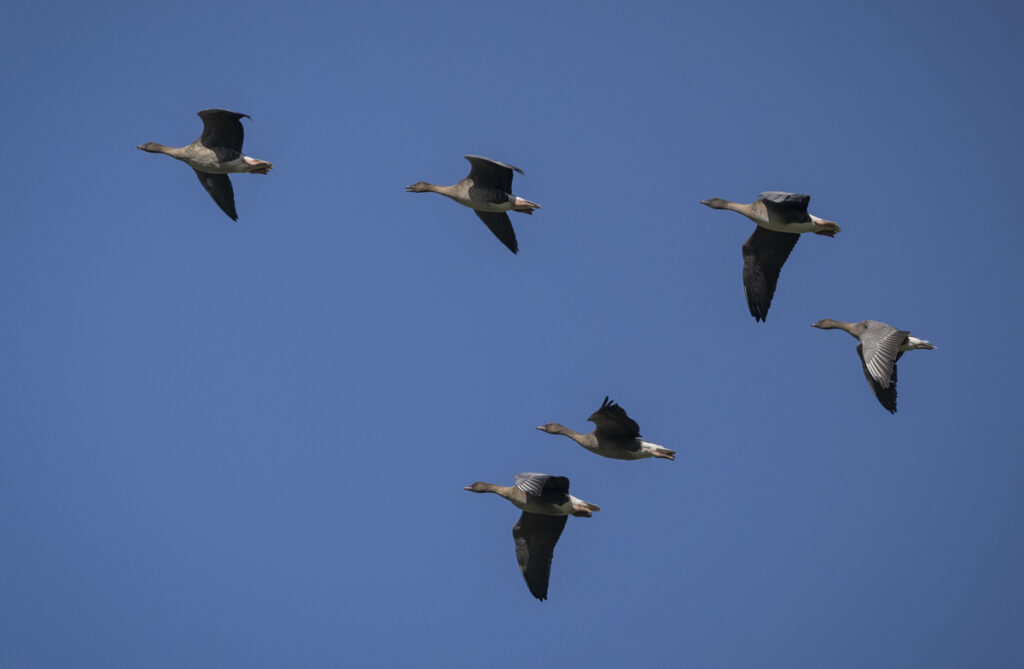
Another advantage of the V formation is that it allows the flock to communicate and navigate more effectively. Pink-footed geese are highly vocal birds in flight, constantly “wink-winking” to one another to stay coordinated. The V formation enables each bird to maintain a clear line of sight with the others, so they can adjust in response to changing conditions or to signals from their leader. This visibility ensures that the group stays together, which is crucial for birds that rely on collective navigation strategies to reach their destination.
Flying in a V also reflects a level of cooperation among migratory birds. By allowing each bird the opportunity to conserve energy, this cooperative structure increases that group’s chance of surviving long migrations and strengthening social bonds within the flock. These formations are not only practical but also help to reinforce the social dynamics that are integral to the survival and cohesion of species like the American pelican, a highly gregarious bird who form huge colonies.
The benefits of the V formation are so advantageous that even the military has adopted it for its aircraft. Just like birds, military planes flying in a V formation conserve fuel by capitalizing on the aerodynamic updraft created by the lead aircraft. This fuel efficiency is critical for long-range missions, as is the improved communication and visibility offered by the V formation, which allows each pilot to maintain a visual connection with the others.
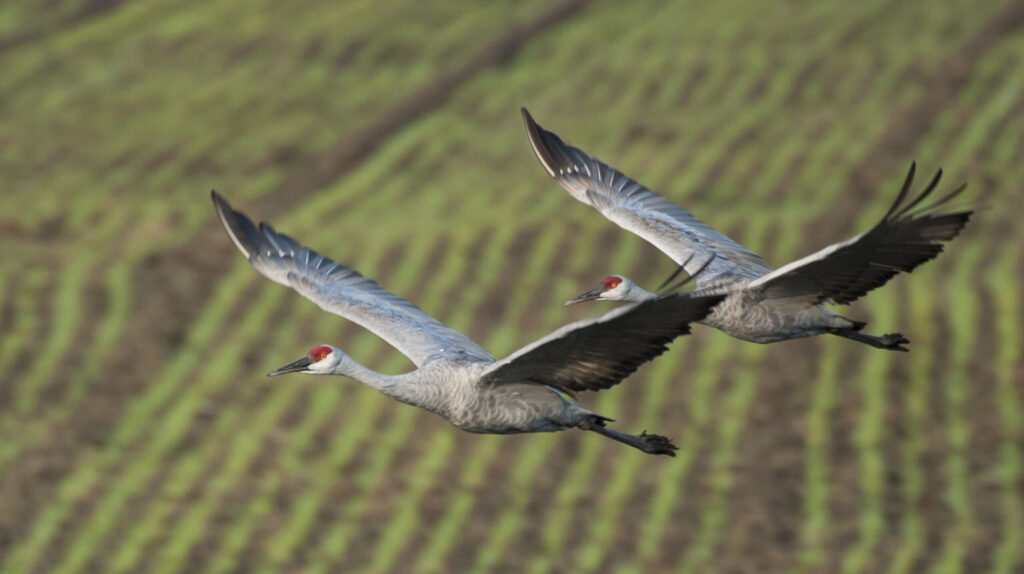
The complex yet effective V formation is an extraordinary example of nature’s ingenuity. Birds can take migratory journeys over entire continents from the Americas to Siberia, from the North to the South Poles, over deserts and oceans and mountains, making these flights among the most challenging in the animal kingdom. By working together in V formation, these birds can travel farther, safer, more efficiently, and maintain their social connections along the way.
